#plankhouse
Explore tagged Tumblr posts
Text
“Plank houses are good houses for people in cold climates with lots of tall trees(...) only people who don't need to migrate spend the time and effort to build these large permanent homes(...) only coastal tribes, who make their living by fishing, made houses like these.”
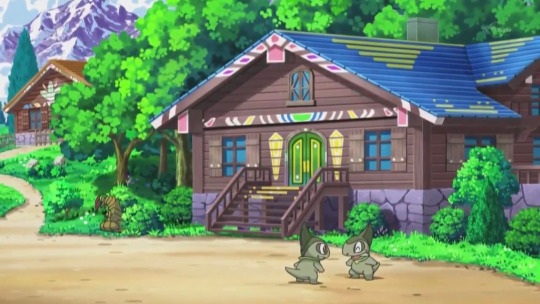
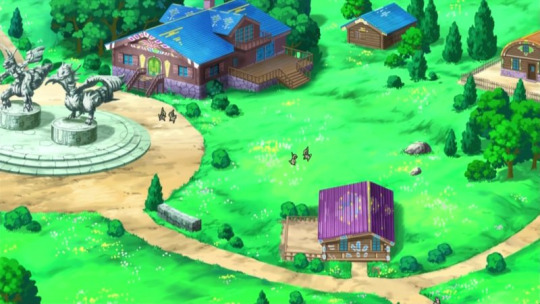
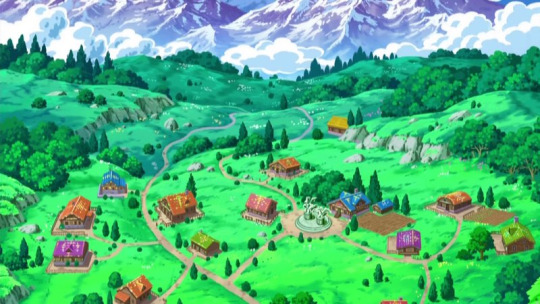
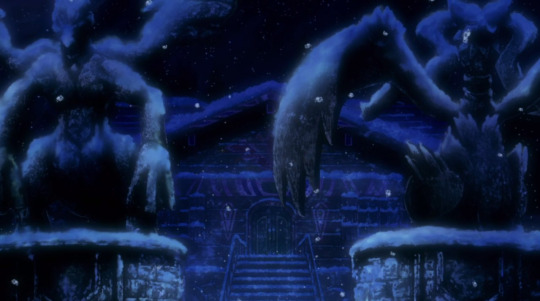

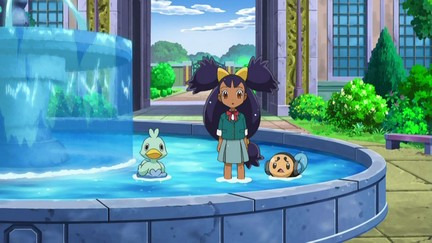
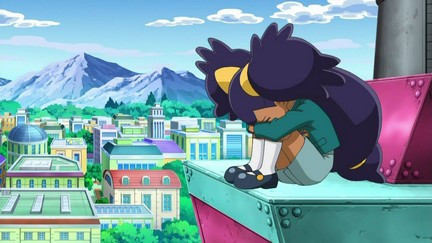
Iris at Opelucid Academy was ostracized for her "strange" behaviour like splashing around in the fountain or picking fruits from the trees to eat... she also had trouble studying from books, as it seems she mostly learned through an oral tradition in her village from the Old Matriarch/Village Elder before that.

There's a scene in the fishing competition episode where Iris gets very, very bored waiting for a Water type to bite at her lure, so she just pulls up her sleeves, sheds a layer, and quickly and easily catches a Water type Pokemon on her own!
The Pokemon world is a fantasy one, but with analogous regions/countries to our world and the American region we're shown (Unova, largely based on New York, but blended with other aspects of the U.S., too, so we also see the Resort Desert, where in the anime, an abandoned mining town built during the Gold Rush is also shown… which would help explain the reservations....)


Both past (Champion Alder) and current (Champion Iris) Champions are Native--although Iris looks very different from the rest of the people in her village, so she's likely mixed... we'll likely never know because she seems to be a half-wild orphan, all her flashbacks of her life before Opelucid Academy are either among the forest Pokemon, with her childhood friend Shobu/Shannon, or with the Old Village Elder who taught her.

Alder is most obviously inspired by Natives of the Great Plains, who relied heavily on the buffalo (American bison)... unlike how cruelly they were whittled down in number in reality to starve the Natives, they still exist in the wild in great numbers in the Pokemon world, which tends to portray humans working towards a more utopic world, aiming for harmony with nature, having learned from past mistakes and wars

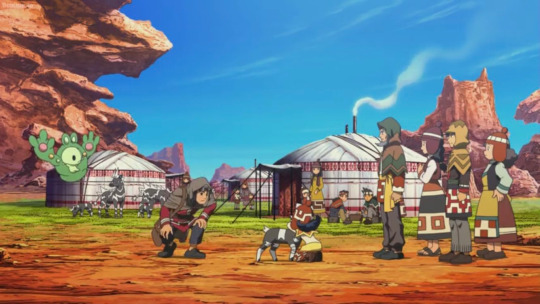

Satoshi Tajiri, after all, made the games to preserve the memory of the lost natural landscape of his youth which was paved over. Environmentalism and love of nature is at the heart of it (even if cynical fake fans see it as overglorified cockfighting because they do not see the trainer-Pokemon bond as more like coaches and athletes, do not see the Pokemon as highly sentient, or do not understand how they are shown in the anime to be very proud and battle for sport, often refusing to be captured unless a trainer first defeats them in battle and shows their strength & worthiness to train them).
As you travel from your idyllic hometown, you see more polluted cities, that create new monsters or alter existing ones through their pollution (Muk, Trubbish, Corsola->Cursola [a happy Water type becoming a sad Ghost type, bleached coral],) some species are hunted/poached to near-extinction (like the gentle Lapras), others were chased out of hospitable land by humans and forced to adapt and likely ultimately failed/went extinct (Zoroark->Hisuian Zoroark)...
As this lovely review by Tama Hero of the Red & Blue games describes: “The game asks you to be curious, learn, grow, & discover: that adults aren’t always right, even in positions of authority; learn how to be better than the adults that raised you; learn from their mistakes and maybe go on to make better decisions as you inherit this ruined earth.”"
youtube
Sources: "The Ultimate Game Freak" TIME Magazine interview with Satoshi Tajiri. https://content.time.com/time/magazine/article/0,9171,2040095,00.html http://native-languages.org/houses.htm Also: Drawings of Chinook Plankhouse by a Chinook Tribal Councilman. http://publichistorypdx.org/projects/chinook/river-chinook-plankhouse/
#pokeani#Pokemon Best Wishes#Unova#trainer Iris#Champion Alder#Dragon Village#Village of Dragons#Pokemon#Champion Iris#Adeku#Alder#Iris#long post#image heavy *#analysis#it's not solely#character analysis#but there is a little bit I guess
154 notes
·
View notes
Text
From the notes: Wy'east as a name for Mt. Hood is a myth; the only source for this is a novel and it is unclear where the author got it from.
It's time we decolonize the Cascadian volcanoes
64K notes
·
View notes
Photo

Cathlapotle Plankhouse Ridgefield National Wildlife Refuge Ridgefield, Washington
#Cathlapotle Plankhouse#Plankhouse#Ridgefield#Washington#Pacific Northwest#Ridgefield National Wildlife Refuge
5 notes
·
View notes
Link
Before the pandemic, the cedar plankhouse called Cathlapotle would have been full of stories and fire. Every winter, the Chinook Indian Nation and neighboring tribes hold their annual gathering here, on their ancestral lands on a Columbia River floodplain, where red-winged blackbirds sing from the cattails and yellow-and-orange-eyed sandhill cranes strut on stilted legs. It’s not far from the remnants of a village also called Cathlapotle, a major Chinookan trading town established around 1450 that once held as many as 16 plankhouses.
On sunny days when Cathlapotle is in use, the cedar beams glow warmly in the shafts of light streaming through the roof’s smoke holes. People gather round the fires at the center, with a row of chairs for elders and children. The air echoes with talk and songs, and the smell of sweetgrass filters in from outside. But this winter, Cathlapotle was silent, nestled in untrodden green grass and fog, its doors closed.
Like other communities, Chinook tribal members have had to adapt to pandemic-induced isolation. Though scattered throughout the Pacific Northwest, people have recently gathered most Thursdays on Zoom, joined by members of the Confederated Tribes of the Grand Ronde and others.
One Thursday afternoon in early March, a group of Chinuk Wawa language teachers, basket-weavers and storytellers called in from their homes on the Grand Ronde Reservation, in Portland, Eugene and Willapa Bay, to share ikanum, or traditional stories. In consonant-heavy Chinuk Wawa, they caught up with each other and read aloud an ikanum translated from the Kathlamet dialect of Chinook. It recalled a time of hunger on the edge of spring, when the salmon people went up the Columbia and met with their aunties, the big and little wapato, and their uncles, the skunk cabbage and the rushroot.
The stories are important for cultural continuity and the way they bring people together. “It really defines the whole way we look at the world,” Tony Johnson, chairman of the Chinook Indian Nation, told me outside tribal headquarters in the tiny town of Bay Center, in southwestern Washington. “Every landform here, every creek, every inlet has a connection to these stories. So if you know these stories, you see this place in a very different way.”
[Continue Reading]
53 notes
·
View notes
Photo

Headed back to Humboldt County later this month. Hope to get out again to the reconstructed Yurok village at Patrick’s Point State Park.. #2017 #sumegvillage #patrickspoint #humboldt #yurok #nativeamerican #plankhouse #fern #alder #california #mediumformat #group6x6 #onfilm #filmphotography #film #filmisnotdead #filmphotography #analog #analogphotography #ishootfilm #filmisnotdead #blackandwhite #blackandwhitephotography #hasselblad #kodakfilm #tmy #tmy400 — view on Instagram https://ift.tt/2HRvwwM
2 notes
·
View notes
Text
A day of healing



Was able to visit a plankhouse house I helped build,found time to take a selfie, on my way to meet up for a canoe pull today.
Was gifted us with some great weather and while out I couldn't help but find some beautiful sedge to take home.
We have a couple pulls planned this next week that I am excited for along with some gathering planned.
2 notes
·
View notes
Text
from a discord discussion with @zorotrash & @sanji-intheafternoon & @the-jolly-pirate
Modern AU; Sanji & Ace have a little misunderstanding
“When you said you wanted me over, this isn’t what I expected.”
Sanji was staring at the mess of a kitchen in Luffy’s home, stuck somewhere between exasperation and acceptance. He knows all too well that Ace was away on-shift, sometimes gone for days at a time when that happened. Luffy was as incompetent in the kitchen as someone would expect her to be, or perhaps worse. Burning water is one thing-- somehow getting pasta stuck to the ceiling with scorch marks surrounding it was another. There was a strange substance staining the counter tops, and a smell that Sanji could not quite put his finger on. Boxes and boxes of Chinese takeout and pizza delivery were piled near the garbage, a testament to her defeat in Sanji’s domain. It was easier for her to grab and go, especially being a famous Youtube gamer. She could eat while playing, which is what she did while Ace was gone for the most part.
He has to wonder what possessed her to try cooking again though. Perhaps it was just an excuse to get him over here.
With the brightest grin spread across her face, Sanji would swear he was looking at the sun when he looked at Luffy. She bounced on her feet, because she knew the jiggle of her breasts would sway him in any situation. “Thank you, Sanji! You know I love having you here!” Her hands clasped behind her back, an expression of faux-innocence adorned her face.
For all of two seconds, Sanji hated her for it. He hated her even more as he felt the surge of love and admiration through him, and he salutes her with vigor and hearts in his eyes. “Leave it to me!” Oh yes, he really hated her.
With his hair pulled back in a small ponytail and gloves over each hand, he set to work in the kitchen while Luffy rambled on in front of the camera as she fought with whatever game she was currently working through. He loved listening to her, despite the feverish puffing at his cigarette as he slaved away in the kitchen with the mess she made. He should really know better, but in a sense? He also enjoyed helping her.
A noise from the back of the house brought him pause in his work, setting down the plates with care. They sunk in the sink water as he leaned back, raising his visible eyebrow in confusion. “Luffy-?” he beckoned, stepping out of the kitchen slowly. She was unperturbed by whatever Sanji heard, still prattling on as if her life depended on it. “Oi, Luffy!”
Slipping the gloves off each hand, he resigned himself to the investigation. She was far too busy doing-- whatever it was she was doing. He rolled his eyes, tossing the gloves in the trash bag that was near overflowing with delivery boxes as he ventured to the back.
Her home with Ace was fairly large-- a modernized plankhouse, with walls and rooms established, leaving more space than they probably needed. But, sharing a home with two other roommates must make up for it whenever they were home. Deuce and Ace were both first responders- paramedic and firefighter, and Sabo doubled as a college student and a waiter at some male Hooters-esque restaurant. Sanji knew it only by theme, of course. He followed the sounds further to the back, to the master bedroom where Ace and Luffy both stayed. His hand barely had a chance to rest on the doorknob before someone from inside pulled it open.
Suddenly, Sanji was facing the bare, wet chest of Ace, with only a towel around his waist. He just got out of the shower, that much was obvious. Sanji could smell teatree and other earthy scents that he thought suited the fireman perfectly.
But Luffy was supposed to be home alone!
At a loss for words, the blonde could only gape in surprise, his hand just centimeters away from the towel. Brown eyes worked their way up to a reddish brown pair, relieved to find no judgment in them. Ace was always so understanding. The goofy grin that pulled across freckled cheeks had the cook turning red almost instantly, snapping him out of his stupor. He yanked his hand back and stood up straight, though still found himself shorter than Ace in comparison. “Ace--” He coughed, trying to regain some composure.
It was a fruitless effort.
“I-- I thought you weren’t… home,” he confesses. The cigarette between his lips suddenly drops and he scrambles to grab it without thinking, dropping to his knees in front of a towel-clad man. Abandon the cigarette! He stands again, leaving his crutch behind on the floor and turning his head away sheepishly. His stomach was doing hurdles all of a sudden.
Ace, ever the polite one, knelt down for it and dropped the cigarette back in Sanji’s hand. “I just got back about an hour ago. Are you-- cleaning up? I told Luffy to do that.” His eyes rolled, and when Sanji didn’t answer? He realized he was still wearing just a towel. “Oh… Lemme change, alright? I’ll come help you in a bit.”
Before the cook could protest, the bedroom door was shut again.
Find the whole thing on AO3! (x)
40 notes
·
View notes
Text
v; Modern:
Ace, Luffy, & Deuce all live together. Eventually, Sabo ends up joining them as a fourth roommate (along with O-Tama, Anne, & Flint). They all live in a modernized plankhouse:



11 notes
·
View notes
Text
Drawn to Nature: Visit to Ridgefield National Wildlife Refuge Inspires Young Artist

By Brent Lawrence, a public affairs specialist in the U.S. Fish and Wildlife Service’s Pacific Region.
Christin Engelberth’s class project led her down a new path, both literally and figuratively.
The Pacific Northwest College of Arts senior drew a challenging assignment for her Center for Design class project. She was asked to turn the “Big Six” uses of National Wildlife Refuges into artistic representations.
Those Big Six uses, which are outlined in the refuge system’s operating principles, are hunting, fishing, photography, wildlife observation, education and interpretation.
Turning those concepts into illustrations would be a challenge for anyone, but it was particularly so for Christin. By her own admission, she’s not exactly the outdoorsy type. Born in Germany, she spent most of her childhood in Texas before moving to Portland, Oregon, for college. Living in downtown Portland with public transportation as her main means of travel, she had never visited a National Wildlife Refuge in the Pacific Northwest.
So how can an artistically inclined woman who wants to write and illustrate children’s books for a living quickly embrace the purpose of National Wildlife Refuges and turn it into art? In 10 weeks?
It started with a trip down a path at Ridgefield National Wildlife Refuge. Eric Anderson, the deputy project leader for the Ridgefield NWR Complex, took her on an educational walk around part of the refuge.

Stopping at the entry kiosk, he explained the mission of the National Wildlife Refuge System is to administer a national network of lands and waters for the conservation, management, and where appropriate, restoration of the fish, wildlife, and plant resources and their habitats for the benefit of present and future generations of Americans. He explained how the Big Six uses fit into management of a National Wildlife Refuge.
Eric explained the history of the refuge’s location and its significance to local Native American Tribes. He pointed out where Lewis and Clark Expedition camped in 1805 and told stories about what they wrote in their journals about the waterfowl that were “emensely noumerous, and their noise horid.” We explored the Cathlapotle Plankhouse and marveled over the hand-hewn logs. We discussed the refuge’s role in protecting habitat for the dusky Canada goose and other waterfowl, as well as the federally threatened Columbian white-tailed deer.
He explained that hundreds of people annually take advantage of waterfowl hunting on the refuge. Eric noted that thousands of school kids come out every year for outdoor education classes. He shared that tens of thousands of people use the auto tour route to see wildlife and take photos. Ridgefield is the very definition of public lands being available for everyone.
Christin’s takeaway from the trip?
“Wow! Everything was so impressive. I didn’t really know how different National Wildlife Refuges were from National Parks. You do different work, and you’re really focused on the wildlife, which is really cool. There are so many people working for the Service who focus on wildlife and care for their habitat,” Christin said.
With that kernel of information firmly implanted in her brain, Christin started sketching. Then as the project leader, she enlisted help from classmates with sketches and feedback.

Sometimes after getting feedback from the Service, she would go back to the ol’ drawing board. That feedback is essential in the Center for Design class, according to instructor Martha Lewis.
“It is set up as a design studio with real clients and projects,” Martha said. “Students are exposed to all aspects of a professional creative practice such as meeting with clients, developing strategic approaches to provide clients with creative solutions for their design needs, managing work flow and interacting with vendors, and seeing a project through to the end.”
That end result from the continual discussions and give-and-take with the Service came out, well, stunning. Each round of sketches improved, each version adding details that honed in on wildlife and conservation.
Christin incorporated species from the Service’s Pacific Region in each item: a pileated woodpecker perched in an Oregon white oak for education; a salmon for fishing; a black-tailed deer for hunting; an Oregon spotted frog for interpretation; a Fender’s blue butterfly for wildlife observation; and dusky Canada geese for photography.

“It came out so nicely after working back and forth,” Christin said. “It was a great experience working on this project. I learned a lot in the process, and I also learned I want to go back to the refuge.”
It was an honor working with Christin on the project. We watched her absorb information about the Service’s National Wildlife Refuge System and turn it into something personal that may help others connect with wildlife conservation and public lands.
Keep an eye out for Christin’s work. It just might pop up at a refuge near you and bring you some inspiration.
#usfws#pnca#art#artists#conservation#wildlife#washington#oregon#texas#portland#pdx#education#hunting#fishing#interpretation#photography#observation#nwr#national wildlife refuge#NWRA
4 notes
·
View notes
Photo

Field trip to the Ridgefield National Wildlife Refuge and Cathlapotle Plankhouse. We harvested nettle, had tea, went on a nature walk, saw a great blue heron, and learned about some of our ancestors. I looked up how to say thank you in Chinuk Wawa and taught the students. A chorus of kids saying "Masi!" to the folks showing us around was precious! #ndneducation #chinukwawa #grandronde #siletz
1 note
·
View note
Text
Enjoy the Refuge with the whole family as you join us for a day of art, culture, games and demonstrations of traditional technology brought to you by the First Peoples of this area. Get a tour of a Chinookan-style Plankhouse modeled after Cathlapotle, one of the many villages that thrived close by along the Columbia River. Watch art, fire making, and flintknapping demonstrations with local tribal members and artisans. Get a tour of our trails and learn traditional uses of local plants, or go on an interactive family walk to explore Refuge trails. Let your kids try their hand at art and craft activities using materials found right here on the Refuge. Even do a tour of the Refuge by car to see what creatures might be out and about enjoying a rare cool day in August!
12-4 Plankhouse Open
12:30 to 1:30 Ethnobotany Hike
2:00 to 3:00 Family Nature Hike
Inside the Plankhouse: Tours and demonstrations including cordage, fiber, art, fire, and flintknapping.
Outside the Plankhouse (covered area): Native games, family crafts, and flinknapping demos.
*There is a $3 fee to enter the Refuge unless you have a federal lands pass. Please bring exact change to pay at the self service kiosk in the parking area.
0 notes
Photo

Virginia L. Butler of Portland State’s Department of Anthropology wrote an article titled, “Exploring ecodynamics of coastal foragers using integrated faunal records from Čḯxwicən village (Strait of Juan de Fuca, Washington, U.S.A.)”, published by Journal of Archaeological Science: Reports in October 2018.
Abstract
Extensive 2004 excavation of Čḯxwicən (pronounced ch-WHEET-son), traditional home of the Lower Elwha Klallam Tribe in northwest Washington State, U.S.A., documented human occupation spanning the last 2700 years with fine geo-stratigraphic control and 102 radiocarbon samples. Remains of multiple plankhouses were documented. Occupation spans large-magnitude earthquakes, periods of climate change, and change in nearshore habitat. Our project began in 2012 as a case study to explore the value of human ecodynamics in explaining change and stability in human-animal relationships on the Northwest Coast through analysis of faunal and geo-archaeological records. Field sampling was explicitly designed to allow for integration of all faunal classes (birds, fish, mammals, and invertebrates), thus facilitating our ability to track how different taxa were affected by external factors and cultural processes. With over one million specimens, the faunal assemblage represents one of the largest on the North Pacific Coast. Invertebrate records reveal striking changes in intertidal habitat that are linked to the formation of the sheltered harbor and catastrophic events such as tsunamis. Analysis suggests a high level of consistency in the structure of resource use (evenness and richness) across 2150 years of occupation, despite increase in intensity of human use and a shift to plankhouse occupation. Trends in fish and invertebrate representation do not correspond to changing ocean conditions, while changes in abundance of herring, salmon, burrowing bivalves and urchins are consistent with impacts from tsunamis. Comparison of resource use between two well-sampled houses before and after one tsunami suggests that while both households were resilient, they negotiated the event in different ways.
0 notes
Text
Native American Culture in Southwest Washington
If you ask about Native American influences in Southwest Washington, some folks will simply direct you to the nearby casino owned and operated by the Cowlitz Tribe. But if you explore a little further, you’ll find Native American culture everywhere. From the traditional beadwork on display at the Clark County Historical Museum to the various street names running through the city of Vancouver, there are plenty of examples of Native culture. Here are three of my favorites (along with six accompanying photos):
1. On August 13, 2018, I visited the Ridgefield National Wildlife Refuge. These 5200 acres were set aside primarily to protect migrating birds, but inside the refuge visitors can also see a reproduction of the Chinook Nation Cathlapotle Plankhouse. Its reconstruction was based on archaeological evidence uncovered within the refuge.
2. On August 20, 2018, I went to the port town of Kalama, Washington. Here I found four totem poles carved by the late Don “Chief Lelooska” Smith. The tallest pole is 140 feet high and carved out of a single Western Red Cedar tree. It’s the largest one-piece totem in the world.
3. On August 25, 2018, I took a walk around Battle Ground Lake. The lake and the town of Battle Ground were notoriously named after an 1855 standoff (not really a battle) between the Klickitat peoples and a group of soldiers from Fort Vancouver.
1 note
·
View note
Text
Bison of the Western Rockies
Bison of the Western Rockies

For years I have stated that the tribes did not have bison in Oregon so they would not have made tipis. This is why the tribes have plankhouses and longhouses made from woven matts. Tipis require a large animal to cover the tipi with their hides. This has made sense to most people. We did have structures among some tribes that looked like a tipi, the Molala for one had a tipi like mobile living…
View On WordPress
0 notes
Link
Thinking about volunteering at the Ridgefield National Wildlife Refuge? Tune in to our volunteer orientation webinars and start your journey at the Refuge! These webinars will be recorded and posted on the Refuge website, so if you miss the live broadcast, you can catch up with them later. 1pm - 2pm 4 Wednesdays in March: March 1: Getting to Know Your Local Refuges by Deputy Project Leader Eric Anderson March 8: First Peoples of the Lower Columbia by Cathlapotle Plankhouse Director Sarah Hill March 15: Benefits of Being a Volunteer by Park Ranger Josie Finley March 22: Making Volunteering Safe and Fun by Park Ranger Josie Finley To register or for more info, contact Josie Finley at [email protected] or call (360) 887-4106.
#Wildlife Refuge#Volunteer#Habitat#conservation#greatoutdoors#optoutside#nature#education#weeds#plants#safety#helping
0 notes
Photo

Virginia Beach, Virginia (Shadowlawn) - in RAB "comfort zone" ... "Icehouse Restaurant" with my Plankhouse Brewery "Icehouse" beer with "Run-A-Way Bill" Favorite bartender Erika ... relaxing after a day of "Bar Hunting" #RunAwayBill #VirginiaBeach #Icehouse #666BarsUSA 01.15.17 (at Ice House Restaurant)
0 notes